Sumac Lemonade brewed from foraged sumac berries and cool water tastes like lemonade without any lemons. Lightly floral, tart and refreshing it’s delicious as-is or used as a mixer in cocktails and mocktails.
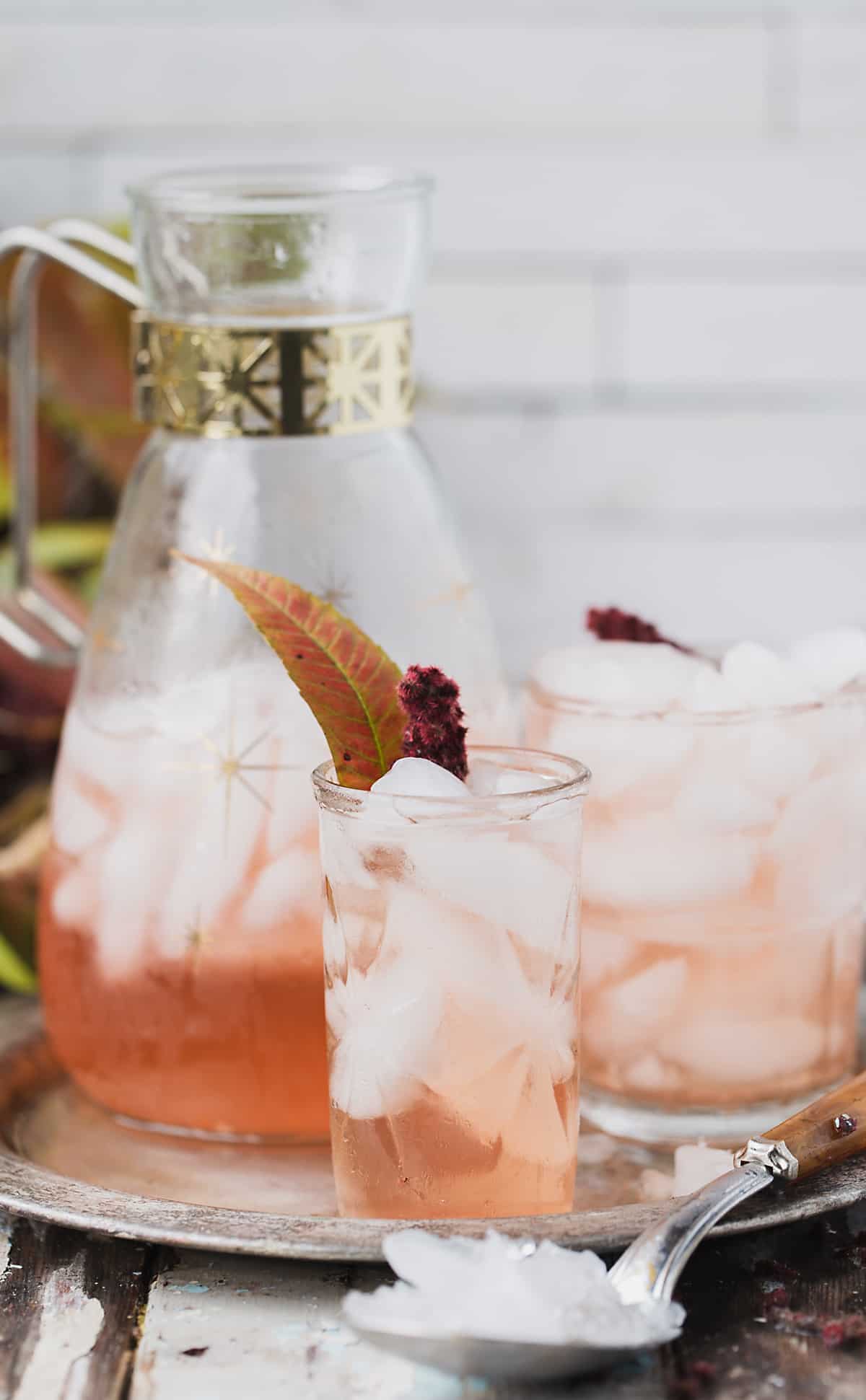
What is sumac
Sumac is a vine or shrub-like tree that grows wild across most of the united states. It’s easy to forage for sumac in the wild. Sumac’s tart, citrusy berries have many culinary uses.

Easy to find in the wild with a flavor that can’t be matched staghorn sumac is a fabulous flavored plant that can be used fresh or dry to add a bright note and beautiful pink hue to all sorts of dishes. Like this blush pink cold brewed tea ‘lemonade’.
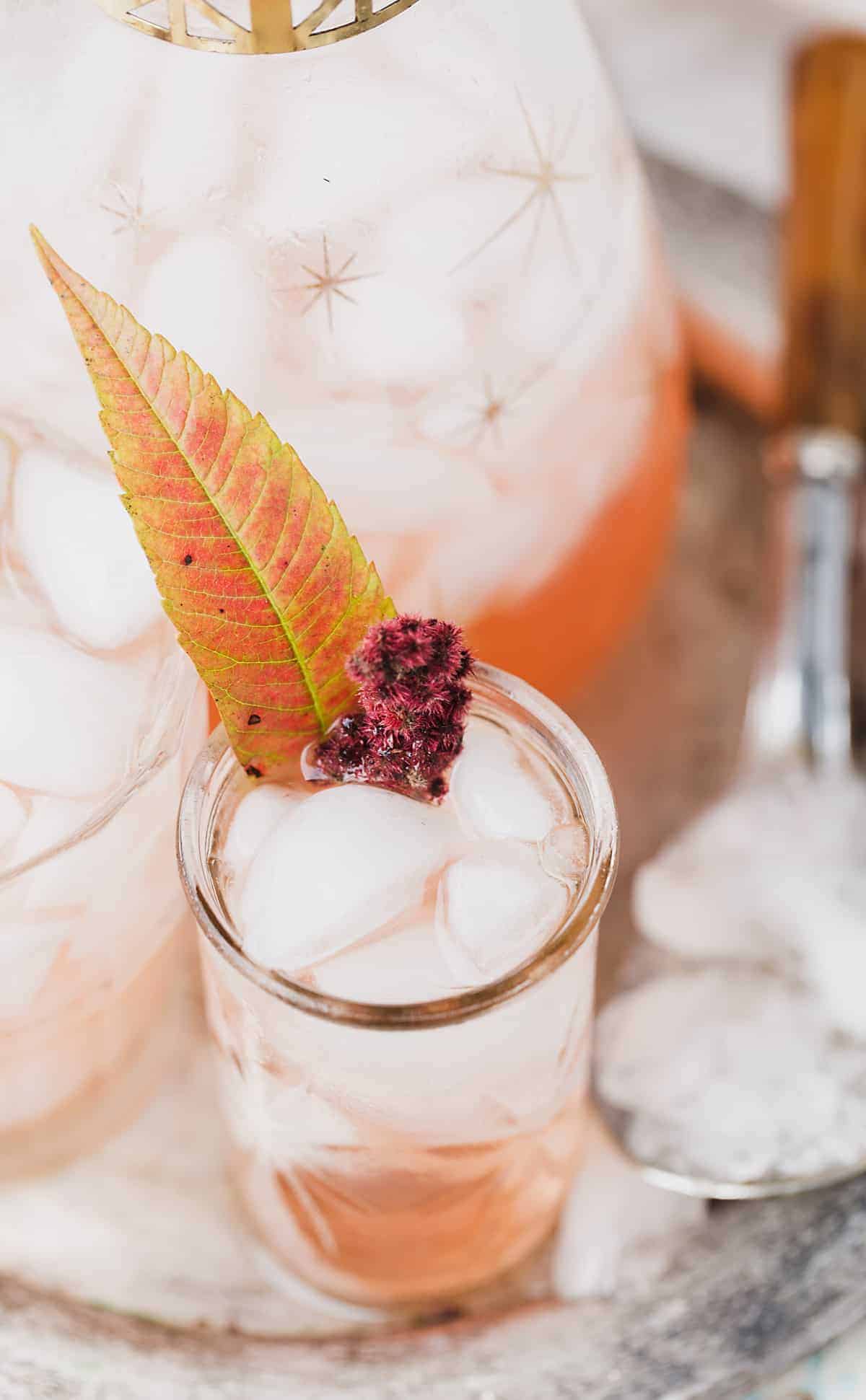
Ingredients
Made like a cold brew tea Sumac Lemonade is made from only sumac and water.
- Sumac berries – pick away any sticks or other leaves that might be clinging to your sumac clusters then break apart and remove berries from the woody sticks.
- Water – cool water for cold brew method or simmering water for a quick simmer method.
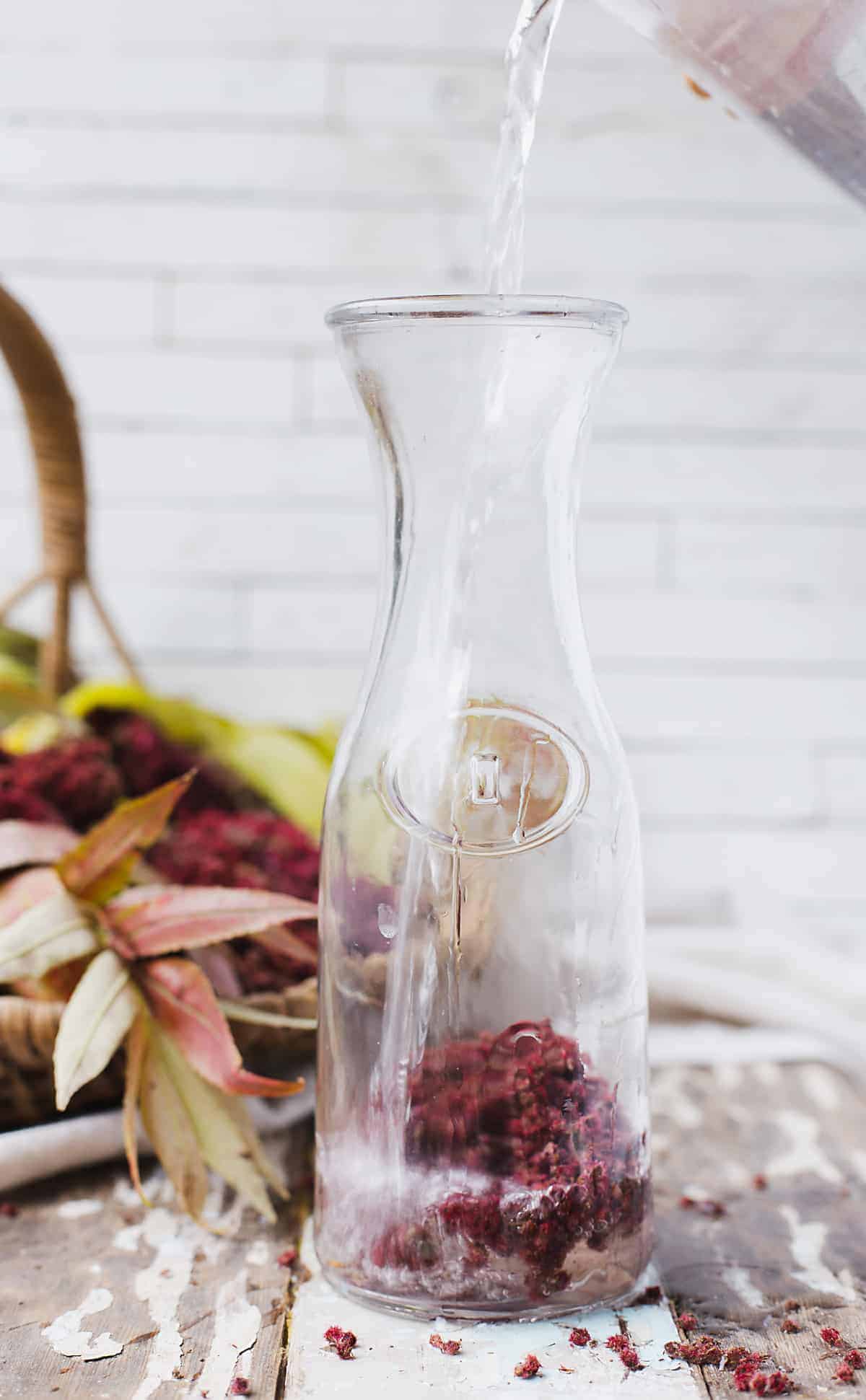
Step by step instructions
- Prepare fresh sumac by picking away any sticks or other leaves that might be clinging to your sumac clusters. Then break apart and remove berries from the woody sticks.
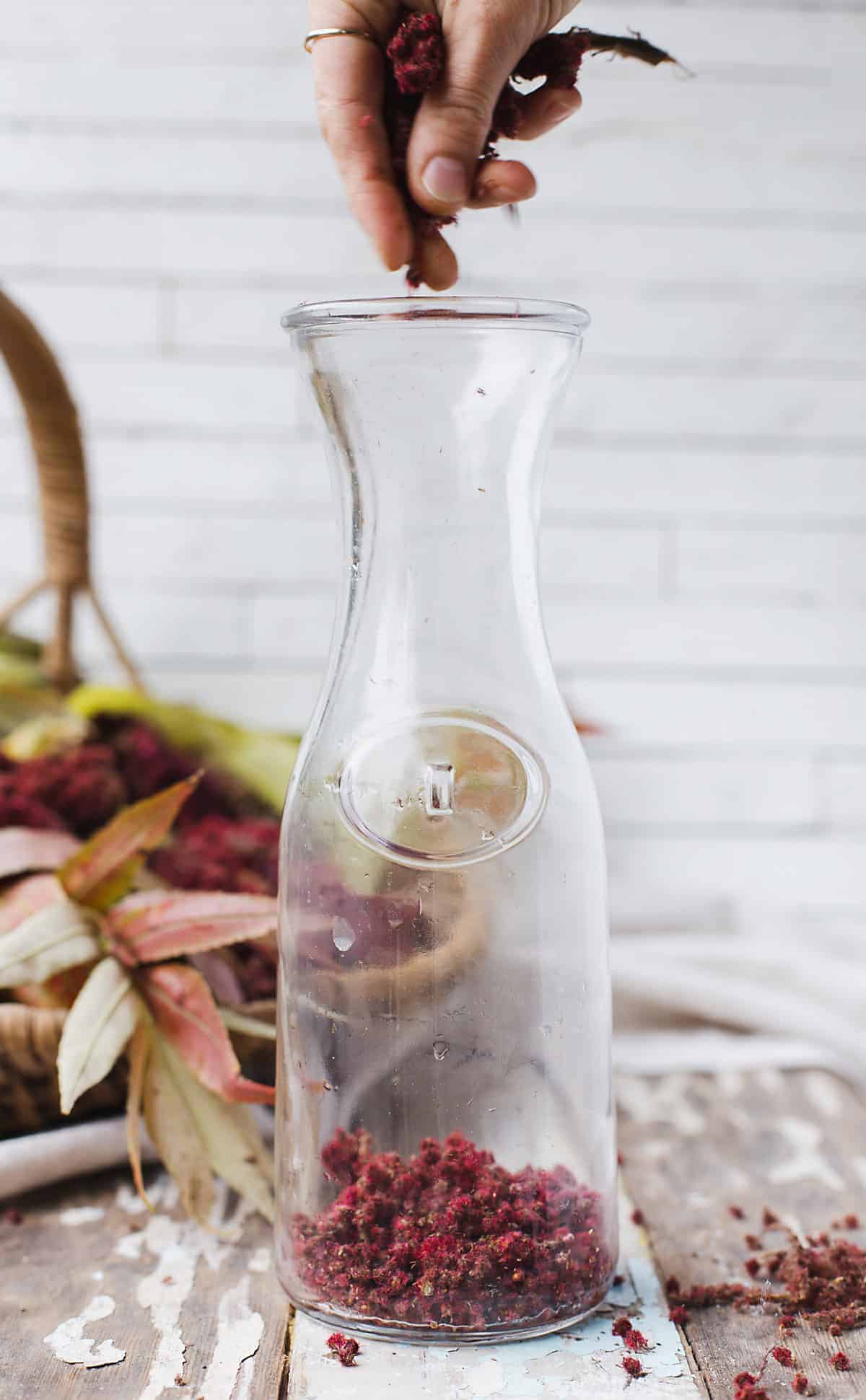
- Place sumac berries in a large pitcher or shallow bowl and cover with water. Crush the berry clusters in the water using a sturdy spoon.
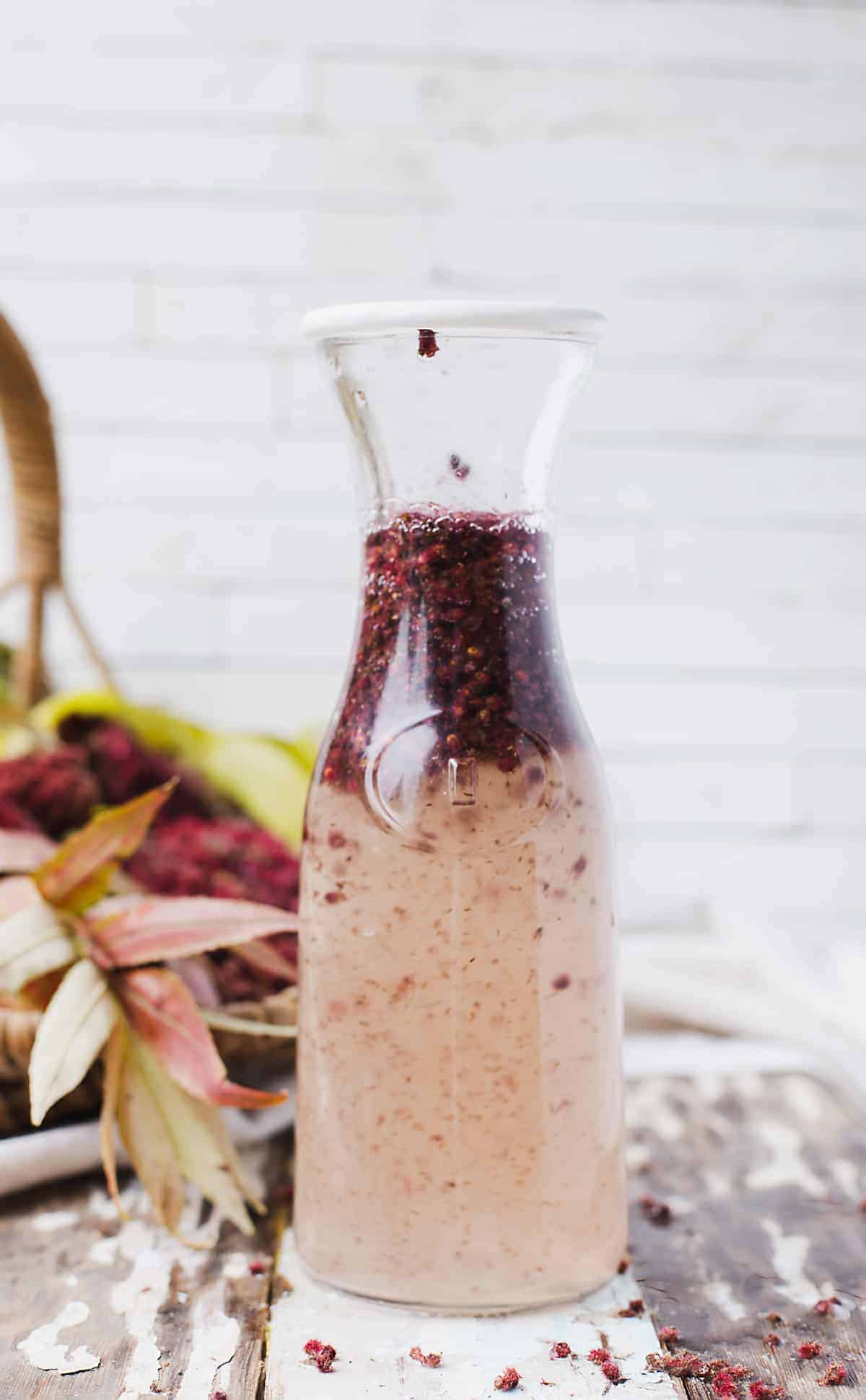
- Allow sumac to soak for at least a few hours or overnight, the longer it soaks the more flavorful it will be. The cold brew method ensures that all the compounds remain intact and the final sumac tea is both flavorful and full of vitamin c. If you’re in a hurry, you can use warm water when making sumac lemonade to speed up the process but it will destroy the vitamin c content. Also hot brewing may cause a slightly bitter taste as it releases tannins from the sumac stems.
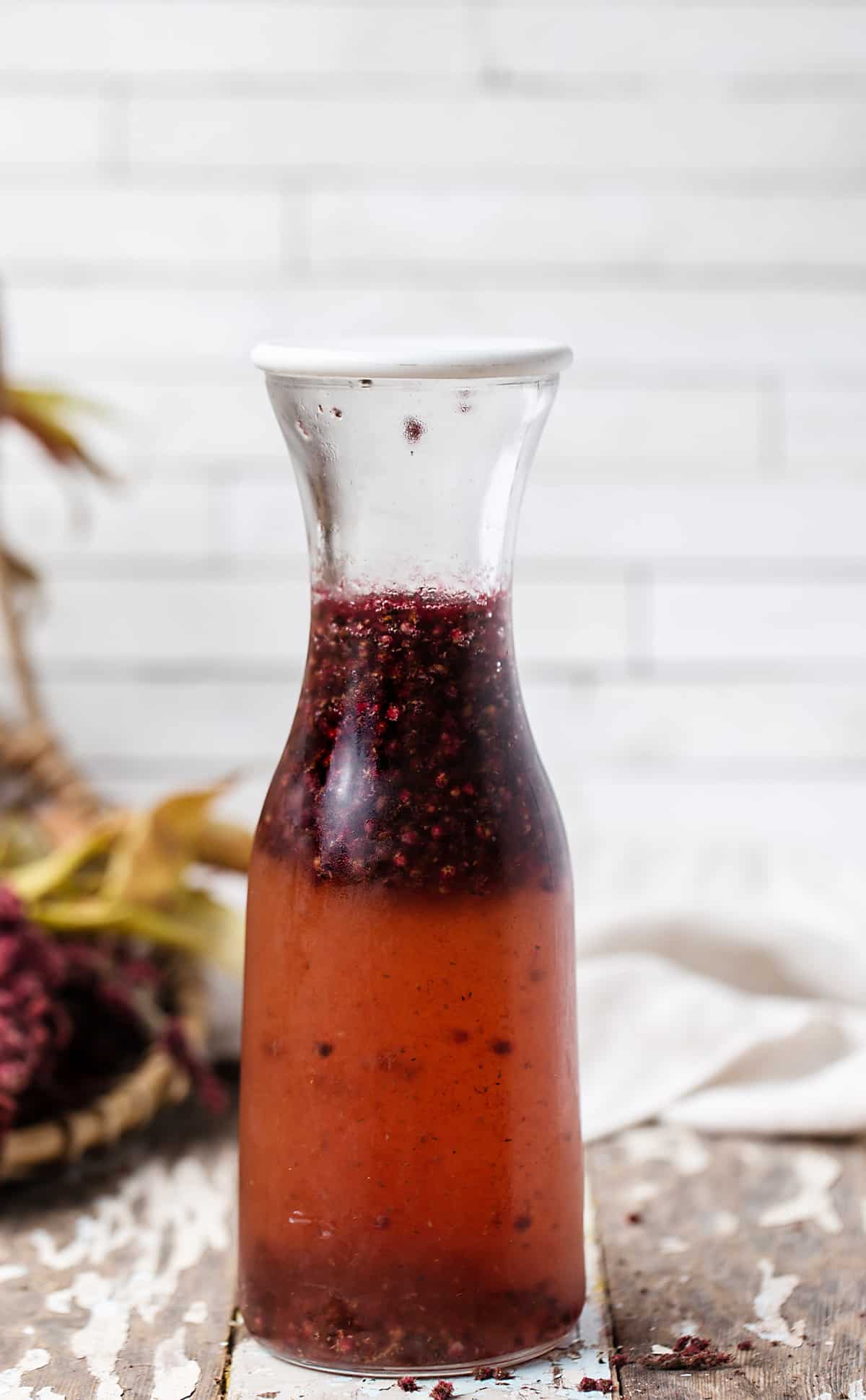
- Strain through a fine mesh strainer, clean kitchen towel or coffee filter.
- Then sweeten to taste with sweetener of your choice, if desired.
- Serve chilled.
- Enjoy!
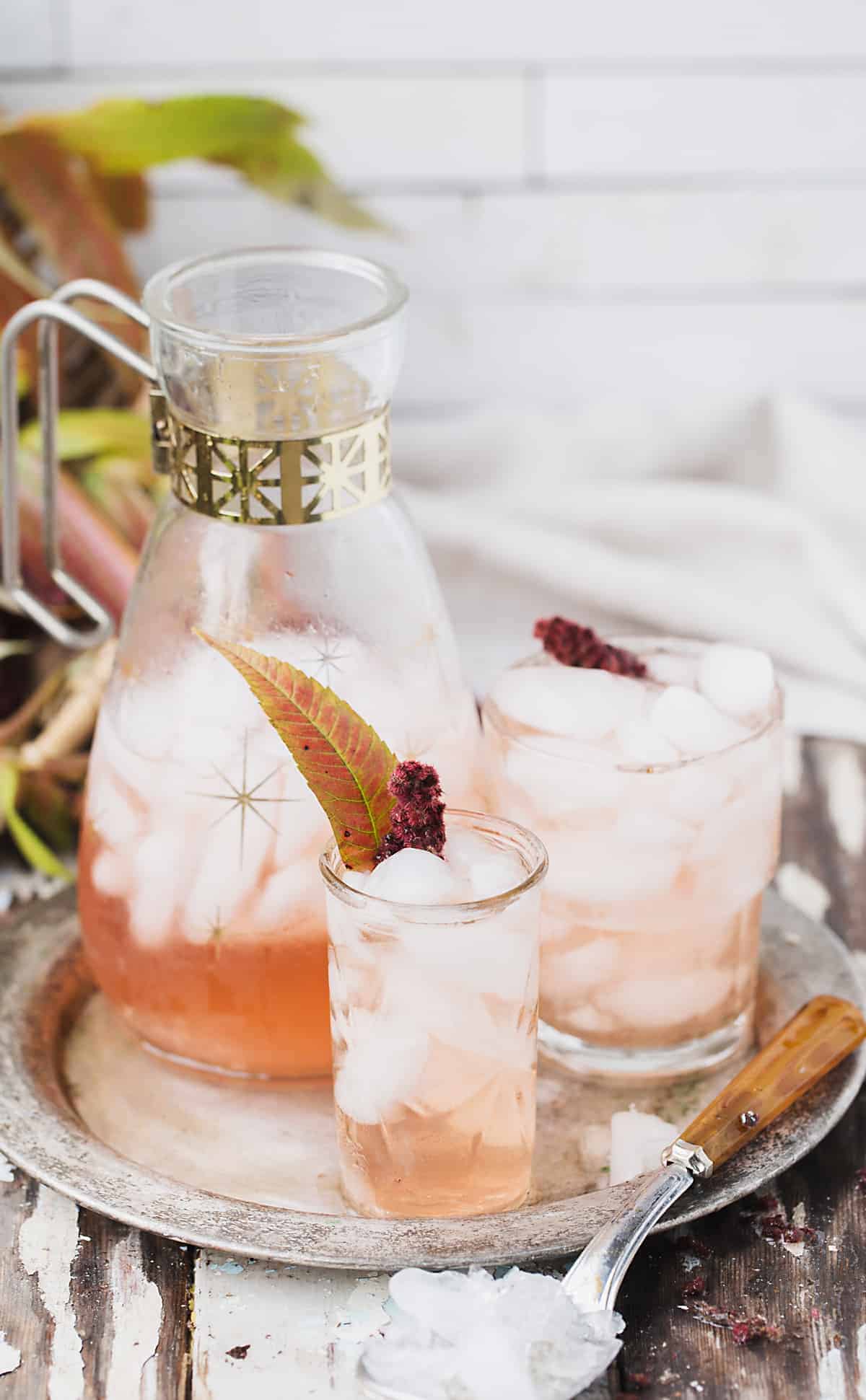
How to serve
Serve sumac lemonade chilled straight from the pitcher. You could also use Sumac Lemonade as a base for other creations like sumac beer, wine, and kombucha. Or mix up sumac mocktails and cocktails.
Or try my favorite sumac cocktail, the Sumac Spritzer. Sumac Lemonade + simple syrup + vodka (or gin) either mixed ahead of time or mixed straight in the glass. When ready to serve top with sparkling water for a sparkly pink foraged cocktail!
Shelf life
Sumac lemonade will keep for up to three days refrigerated. You can also steep the sumac for longer than the recipe calls for. The longer it brews the stronger and more intense the flavor. Leave for up to 2 days before straining for maximum color. Just make sure to include steeping time in the total three day shelf life.
📖 Recipe
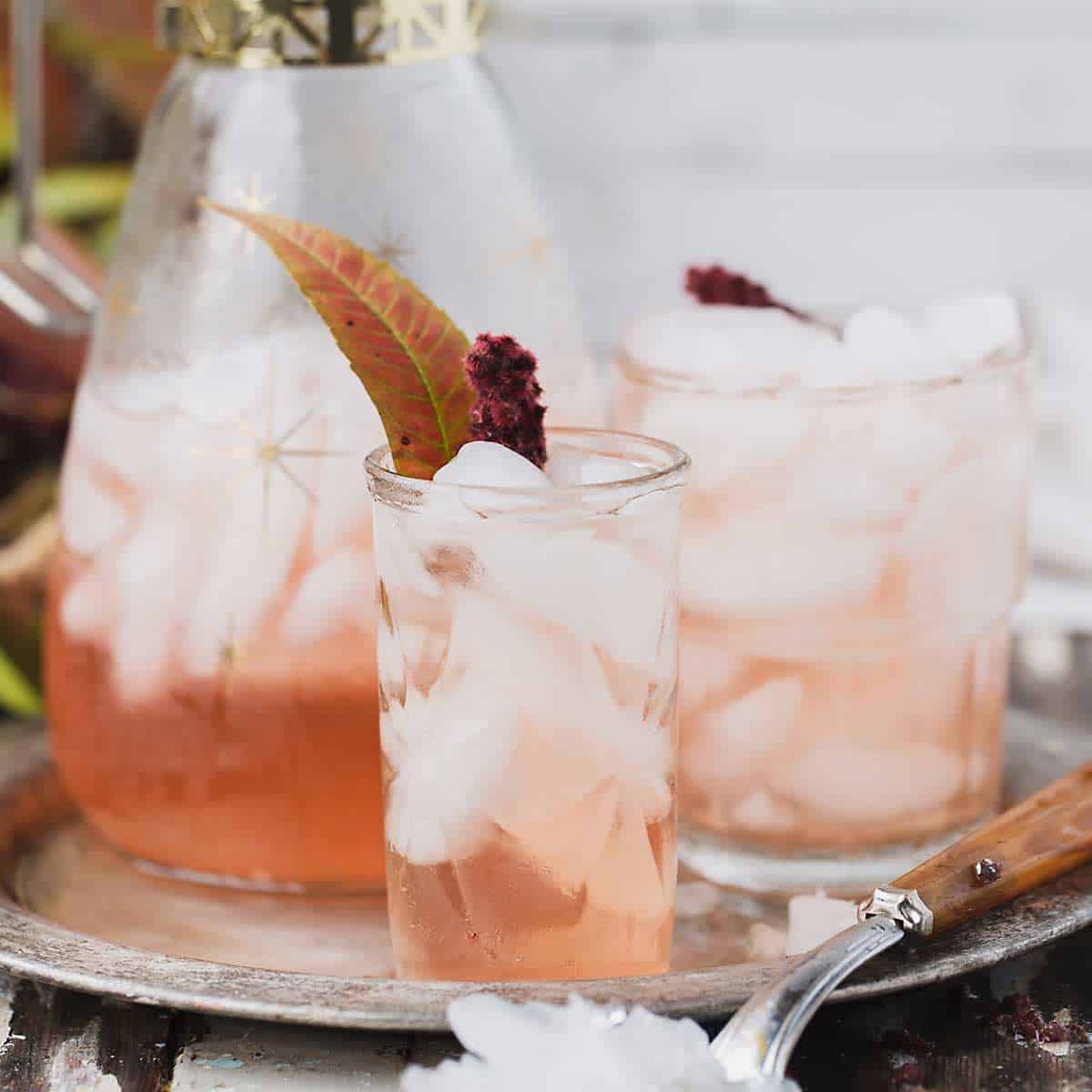
Ingredients
- 1 cup sumac berries from 1 large cluster
- 4 cups water cool or room temperature
Instructions
- Pick away any sticks or other leaves that might be clinging to your sumac clusters then break apart and remove berries from the woody sticks.1 cup sumac berries
- Place sumac berries large pitcher or shallow bowl and cover with water.4 cups water
- Crush the berry clusters in the water using a sturdy spoon then allow sumac to soak for at least a few hours or overnight, the longer it soaks the more flavorful it will be.
- Strain through a fine mesh strainer, clean kitchen towel or coffee filter than sweeten to taste with sweetener of your choice. Served chilled.
Notes
Nutrition

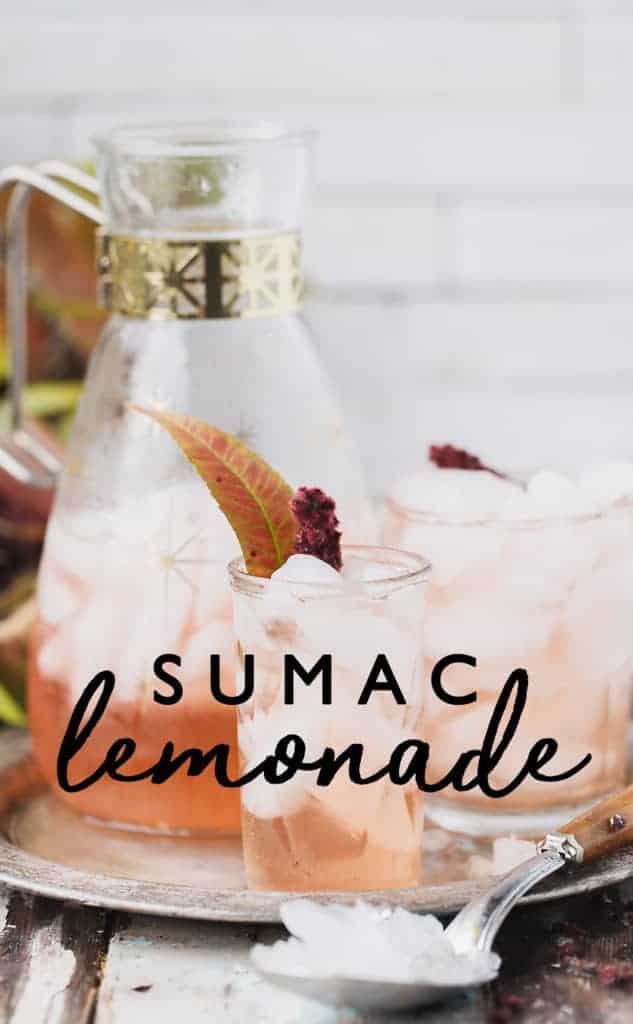







JSC
Please be aware that the yummy sour taste of sumac berries is due to their calcium oxalate content. For most people, in small amounts, this is not harmful, but in large amounts, can potentially be toxic. Also, I’ve seen many medical personnel recommend that people who easily form kidney stones should consume as little oxalate as possible, so sumac “lemonade” would be a “no-no” for those people.
ONE armed MAMA
Yes, there is some debate among foragers and health professionals regarding the safety of consuming foods high in oxalic acid, such as spinach, chives, and cilantro, due to over consumption possibly forming calcium oxalate crystals and leading to kidney stones. Although the current recommendations are that consuming sumac berries is very safe, just as consuming spinach is, anyone who is typically medically susceptible to food allergies and health problems should understand that food writers are unable to list every potential health concern for each individual person of each individual recipe ingredient and should use their own best judgment when trying foods for the first time.
Mary
How much is too much sumac lemonade? How much can you safely drink in one day?
ONE armed MAMA
Hi Mary, I am not a doctor and am not giving medical advice and can only speak to my own experience. When researching it’s easy to find a whole slew of documents about the health benefits but very difficult to find much about the risks of sumac. As far as I can see sumac gets a bad wrap because of the poisonous WHITE-berried sumac and it’s relation to poison oak (also related to mangoes and cashews) and the issue with oxalic acid content is akin to worrying about consuming too much spinach, the health benefits generally outweigh any perceived risk. Personally, I’ve consumed an entire batch of sumac lemonade in one day by myself with no issues. My children snack on the sumac drupes and we eat a lot of meals flavored with za’atar as well as use sumac in other ways without issue.
Tavo
That is an impressive drink! I had no clue that sumac berries could be used in a drink!
Dannii
I love the look of this. Super refreshing.
veenaazmanov
Interesting, cooling and refreshing and a must try drink for sure.
Sue
I absolutely love this, we have sumac growing nearby and I’ve always used it as a spice, but never thought to make tea, I can’t wait.
Gina
Love using sumac in cooking but never realized how easily it was found right outside! This drink is such a lovely subtle hue of pink and so refreshing – thanks for all the great info!
Janet
When should sumac be harvested?
Tristin Rieken
Sumac is best harvested at the end of summer when the leaves of the sumac start to turn from yellow and green to bright orange and red. Ideally, the sumac berries should be harvested at this time because the berries are fresh and the rainy season has not yet washed away the flavor. But it can actually be harvested year round, see this post for more info https://freshflavorful.com/how-to-forage-for-sumac/